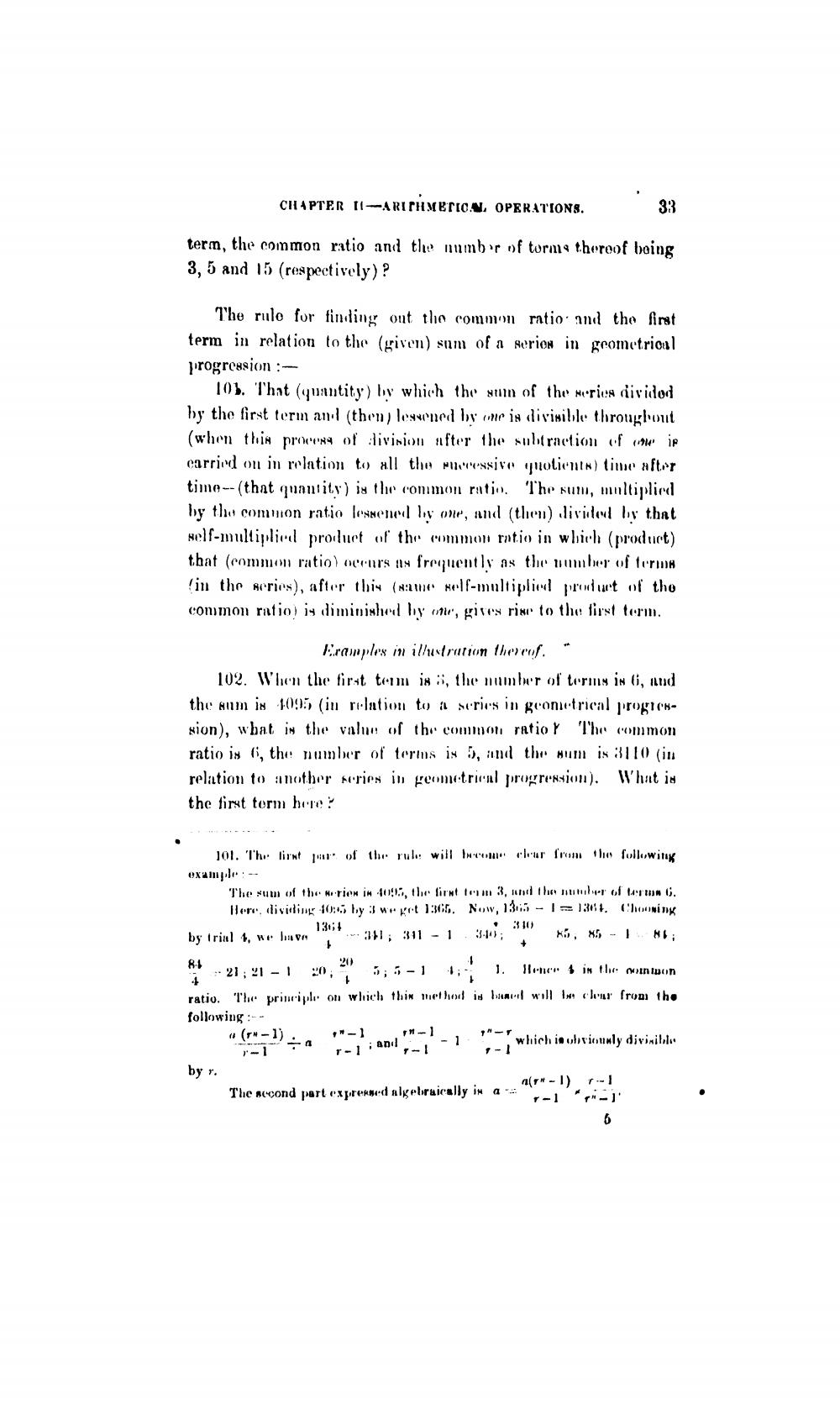________________
CHAPTER ARITHMETICAL OPERATIONS.
term, the common ratio and the number of torms thereof being 3, 5 and 15 (respectively)?
The rule for finding out the common ratio and the first term in relation to the (given) sum of a series in geometrical progression:
10. That (quantity) by which the sum of the series divided by the first term and (then) lessened by one is divisible throughout (when this process of division after the subtraction of one is carried on in relation to all the successive quotients) time after time--(that quantity) is the common ratio. The sum, multiplied by the common ratio lessened by one, and (then) divided by that self-multiplied product of the common ratio in which (product) that (common ratio) occurs as frequently as the number of terms (in the series), after this (same self-multiplied product of the common ratio) is diminished by one, gives rise to the first term.
Examples in illustration thereof.
102. When the first term is 5, the number of terms is 6, and the sum is 4095 (in relation to a series in geometrical progression), what is the value of the common ratio ? The common ratio is 6, the number of terms is 5, and the sum is 3110 (in relation to another series in geometrical progression). What is the first term here?
101. The first par of the rule will become clear from the following example:--
The sum of the series is 4095, the first team 3, and the number of terms 6. Here, dividing 40:55 by 3 we get 1365. Now, 1365-1=1364. Choosing by trial 4, we have 341; 341 - 1
1364 1
• 310 3-44;
85, 85 - 1 81:
8.4
-21; 21 - 1
20;
20 +
5; 5-1
4;
J. Hence 4 is the common
4
ratio. The principle on which this method is band will be clear from the following:--
" (TN-1)
by r.
-
÷4
33
"-1 r-1 ; and
11-1 7-1
- 1
TH-T 1-1
The second part expressed algebraically is a
which is obviously divisible
(-1) 7-1 7-1 -1 6




